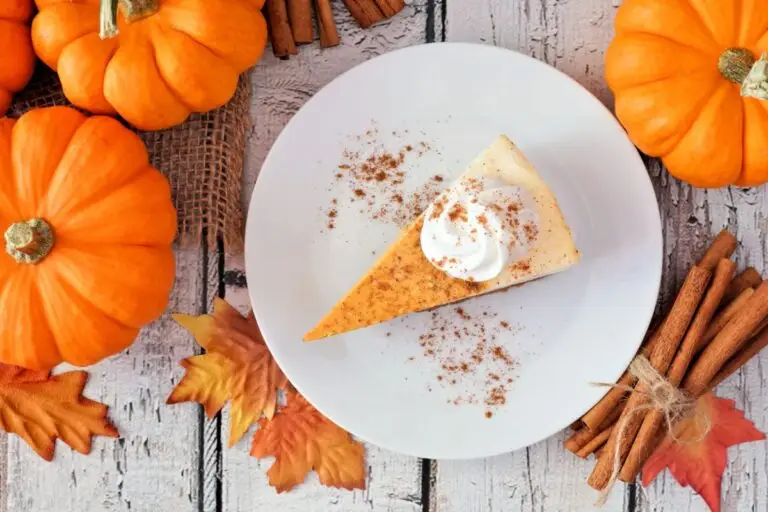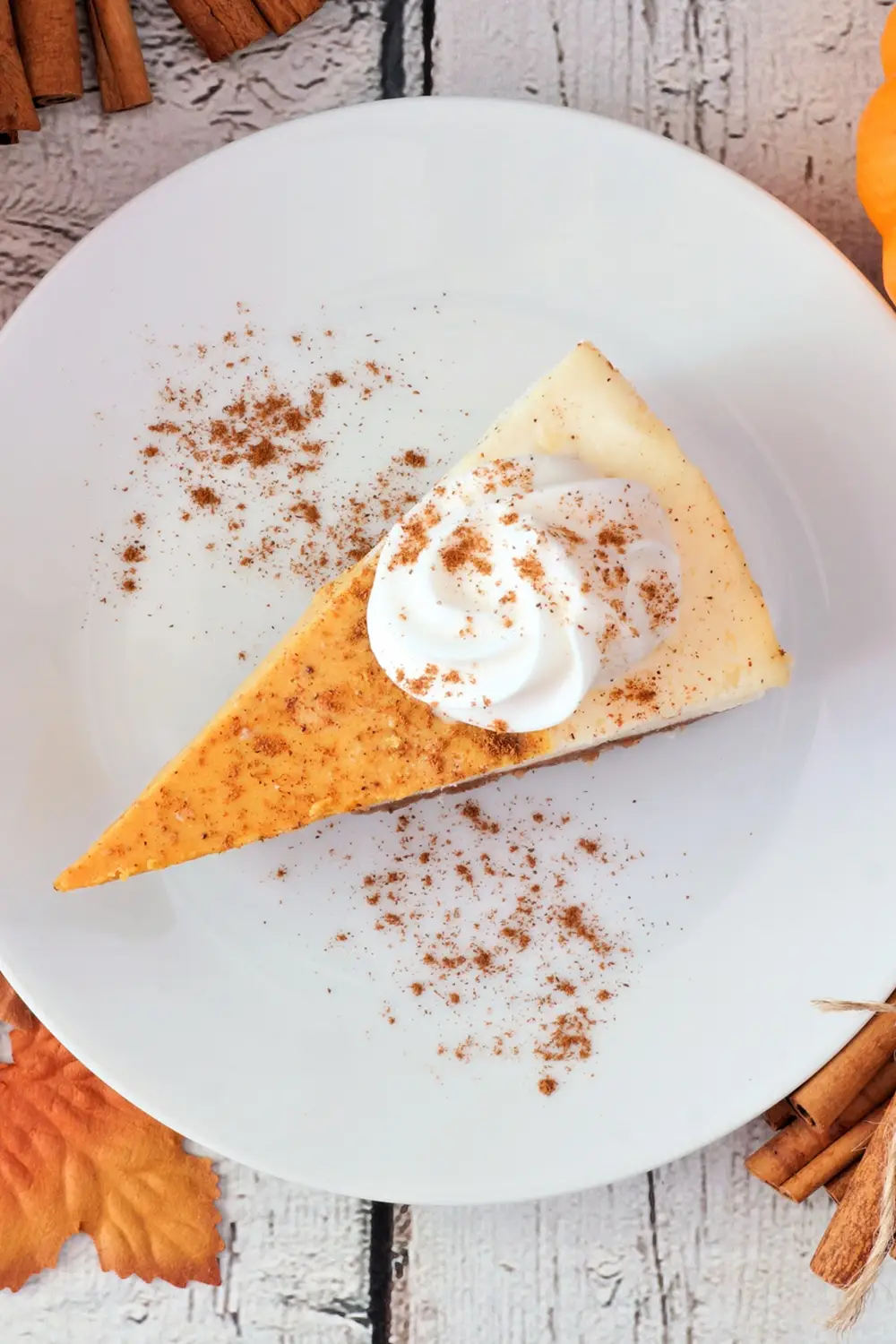This creamy pumpkin cheesecake from a 1999 Pampered Chef collection delivers rich, spiced flavor with a silky sour cream topping that sets it apart from standard recipes. The graham cracker crust stays crispy, the filling bakes up without cracks, and the tangy topping adds the perfect balance to the sweetness. In my opinion, the texture rivals any bakery version, and it's surprisingly straightforward to make at home.
The scent of cinnamon and nutmeg wafting from the oven takes me straight back to autumn afternoons spent flipping through recipe cards at kitchen shows, where neighbors would gather over demonstrations and sample bites. This particular cheesecake recipe captured something special about late '90s home baking - uncomplicated techniques, ingredients you could grab at any grocery store, and results that looked impressive enough for holiday tables.
The 1999 Kitchen
Home kitchens in 1999 hummed with a peculiar energy as families braced for the unknown of Y2K. Pantries were stocked a little fuller than usual, not just with holiday baking supplies, but also with bottled water and canned goods, in case the computers really did reset to 1900 when the clock struck midnight. The Federal Reserve had spent months inspecting banks and reassuring Americans that their savings were safe, while programmers worked overtime to prevent what many feared would be a cascade of technological failures.
SpongeBob SquarePants made his television debut that spring on May 1st after the Kids' Choice Awards, quickly becoming background noise in countless kitchens as kids watched after school. By June, Napster launched and revolutionized how everyone discovered music, with college dorm networks overloading as students shared MP3 files late into the night. The Dow Jones broke 10,000 for the first time on March 29th, sparking celebrations on the trading floor with party hats and a palpable sense that prosperity would continue indefinitely.
Pampered Chef was thriving during this era, with kitchen consultants hosting home shows where friends gathered around counters to watch demonstrations and order tools that promised to make family meal prep easier. The company's 1999 recipe collections emphasized straightforward methods and crowd-pleasing results; exactly what busy families needed as they navigated the strange tension between millennium excitement and Y2K anxiety. This pumpkin cheesecake embodied that practical approach: special enough for Thanksgiving tables, yet forgiving enough for home bakers who weren't pastry professionals.
What Makes This Pumpkin Cheesecake Stand Out

Pumpkin Cheesecake With Sour Cream Topping Recipe
This creamy pumpkin cheesecake pairs silky cream cheese with warm autumn spices and a buttery graham cracker crust, finished with a sour cream topping that balances every spiced, custardy bite. Simple enough for a weeknight and special enough for holiday gatherings, this recipe delivers that cherished, passed-down quality with each slice.
- Total Time: 78 minutes
- Yield: 12 servings 1x
Ingredients
- 3 tablespoons butter or margarine
- 1 1/4 cups graham cracker crumbs
- 3 tablespoons granulated sugar
- 16 ounces cream cheese, softened
- 1 cup granulated sugar
- 3 eggs
- 1 (15‑ounce) can solid‑pack pumpkin puree
- 1 teaspoon ground cinnamon
- 1/4 teaspoon ground ginger
- 1/4 teaspoon ground nutmeg
- 2 cups sour cream
- 1/4 cup granulated sugar
- 1 teaspoon vanilla extract
- Whipped cream
- Chopped pecans or walnuts
- Caramel sauce
Instructions
- Preheat the oven to 350°F; coat the bottom and sides of a 10‑inch cheesecake pan (springform pan) with cooking spray.
- For the crust, microwave the butter in a small bowl on High for 30 seconds or until melted; add the graham cracker crumbs and sugar and mix well, then pat the crumb mixture over the bottom of the prepared pan.
- For the pumpkin cheesecake filling, combine the cream cheese and sugar in a mixing bowl; beat with electric mixer (or stand mixer) at medium speed until creamy, add the eggs one at a time beating until blended after each addition, then add the pumpkin, cinnamon, ginger, and nutmeg and mix well; pour the filling over the crust.
- Bake for 50 minutes on center rack.
- Increase the oven temperature to 400°F; for the topping, mix the sour cream, sugar, and vanilla in a small mixing bowl, spread the sour cream mixture evenly over the top of the cheesecake, and bake for 10 minutes longer.
- Let cheesecake cool on a wire rack; cover and chill for 4 hours to overnight, loosening the sides if needed before serving.
- Prep Time: 20 minutes
- Cook Time: 58 minutes
- Category: Pies
- Method: Baked
- Cuisine: American
How to Make Perfect Pumpkin Cheesecake
Recipe Variations
Frequently Asked Questions
The edges should look set and firm while the center 3-inch circle still jiggles slightly when you gently shake the pan. It will look underdone, but the residual heat continues cooking the center as it cools. The jiggle should resemble gelatin, not liquid—if it sloshes like water, it needs more time. If you overbake until the entire surface is firm, the finished texture will be dry and dense rather than creamy. An instant-read thermometer inserted into the center should read 150-155°F.
Cracks usually happen from overbaking, overmixing, or cooling too quickly. Overbaking causes the proteins to tighten and pull apart as they cool. Overmixing incorporates air that expands and creates weak spots. Rapid temperature changes cause the surface to contract faster than the interior, creating tension cracks. Cool the cheesecake gradually in the turned-off oven with the door cracked to prevent this. Running a knife around the edge immediately after baking also releases tension before cracks can form.
Pumpkin puree is plain cooked pumpkin with nothing added, while pumpkin pie filling contains sugar and spices already mixed in. They're not interchangeable—this recipe calls for pure pumpkin puree since it includes its own sugar and spice measurements. Using pie filling would make the cheesecake too sweet and throw off the spice balance. Check the can's ingredient list: pure pumpkin puree should list only one ingredient (pumpkin), while pie filling will list sugar, spices, and sometimes thickeners.
Greek yogurt works as a substitute with a similar tangy flavor and thick texture, though it's slightly less rich than sour cream. Use full-fat Greek yogurt rather than low-fat to maintain the creamy consistency. The flavor will be nearly identical, and the topping will still set properly during the final 10-minute bake. Crème fraîche offers another excellent alternative with a slightly nuttier flavor and equally smooth texture. Avoid using regular yogurt or low-fat versions, as they're too thin and will create a watery topping.
A water bath helps prevent cracks and promotes even baking by creating a humid environment, but it's not absolutely necessary for this recipe. This pumpkin cheesecake works beautifully without a water bath if you follow the gradual cooling method—turning off the oven and leaving the cheesecake inside with the door cracked lets it cool slowly enough to prevent most cracking. The sour cream topping also provides insurance by covering any small cracks that might form. If you do get cracks despite these precautions, the topping hides them beautifully.
Yes, this recipe adapts beautifully to muffin tins for individual mini pumpkin cheesecakes. Line a 12-cup muffin tin with paper liners and press about 1 tablespoon of the graham cracker crust mixture into the bottom of each cup. Divide the filling among the cups, filling each about three-quarters full, then bake at 325°F for 20-25 minutes until set. Add a spoonful of the sour cream topping to each mini cheesecake and bake for an additional 5 minutes at 400°F. Reduce cooling time to 30 minutes in the turned-off oven, then chill for at least 3 hours.
This recipe is designed for a 10-inch springform pan, which creates a thinner cheesecake that bakes more evenly than a taller version. Using a 9-inch pan will make it taller and require longer baking time—add 10-15 minutes and watch for the jiggle test to know when it's done. An 8-inch pan would make it very tall and risks uneven baking with a set exterior and undercooked center, so stick with 9 or 10 inches for best results. The 10-inch size also serves more people with reasonable portion sizes, as this rich dessert can be quite filling.
The quick pre-bake at 350°F for 8-10 minutes before adding the filling creates a moisture barrier that keeps the graham cracker crust crisp. This initial baking dries out the butter-crumb mixture and sets it into a firm base that resists moisture from the filling during the long bake and overnight chill. Let the crust cool completely after pre-baking so it's not still soft when the filling goes in. Using the right ratio of butter to crumbs also matters—too much butter creates a greasy crust that never fully sets.
Traditional cheesecake relies on eggs to set the filling and create its characteristic dense, smooth texture, making them difficult to omit in baked versions. No-bake pumpkin cheesecake recipes use whipped cream folded into the cream cheese mixture instead, but the texture is lighter and mousse-like rather than the rich, firm consistency of baked cheesecake. For this specific recipe, eggs are essential to achieving the proper texture since it's a baked cheesecake rather than a no-bake version.
What's your favorite autumn dessert memory? Does the scent of pumpkin spice transport you back to a particular kitchen or gathering?
If you make this pumpkin cheesecake with sour cream topping, please leave a rating and review! I'd love to hear how it turned out and what memories it brings back for you.

0 comments